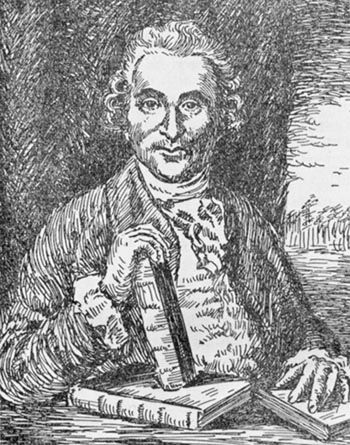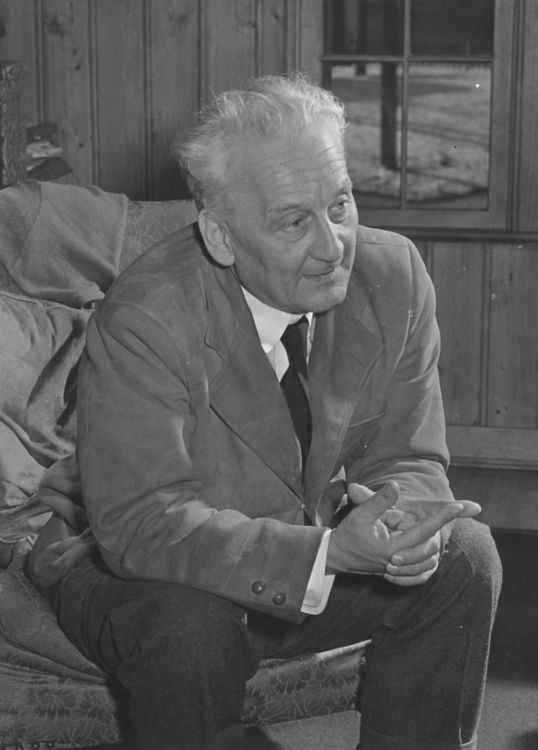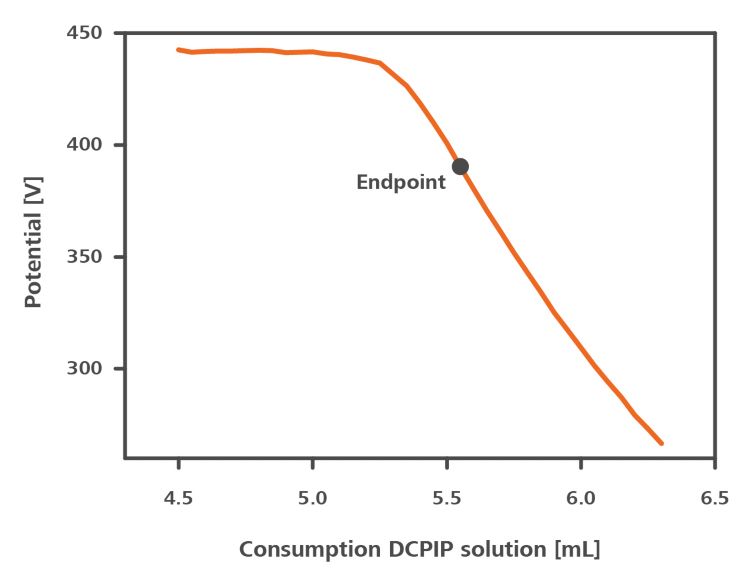«Drink orange juice, it’s good for you because it contains vitamin C!» Most people have probably heard this or a similar command in their childhood. Vitamin C, also known as ascorbic acid or L-ascorbic acid, is an essential nutrient which humans cannot produce by themselves. We rely on external sources like fresh fruits and vegetables to obtain it. As vitamin C has antioxidant properties, it is also often used as a food preservative. This blog article will cover the history of vitamin C and some of the different analytical methods used to determine vitamin C in various products.
Use the navigation below to jump directly to a specific section.

The history of vitamin C is well linked to the dreaded disease of scurvy, which used to be the leading cause of death among sailors. Vasco da Gama had already noticed the curative effects of citrus fruits, and authorities recommended the use of lemon juice or other plant-based foods to prevent scurvy.
However, in 1747 it was the British naval physician James Lind who confirmed in a controlled experiment that citrus fruits could prevent scurvy. In the experiment, Lind grouped twelve sailors with a similar severity of scurvy into pairs and treated each pair differently. For two weeks, the participants in the study received either cider, elixir of vitriol (a mixture of sulfuric acid and alcohol), vinegar, seawater, a paste made of garlic, mustard seeds, and other spices plus a drink of barley water, or two oranges and one lemon. Only the pair that received oranges and lemons was cured [1]. As a result, the British Navy ordered all of its ships to carry a constant supply of juice made from European lemons. What Lind did not know was that the citrus fruit's medicinal properties were because of its high vitamin C content.
In the following centuries, foods which were known to prevent scurvy were called antiscorbutic, derived from the medieval Latin word for scurvy: «scorbutus». Aside from citrus fruits, these foods included for example sauerkraut, which James Cook used on his long voyage to Hawaii.

In 1912, Casimir Funk introduced the concept of vitamins as essential dietary components. The so-called anti-scorbutic factor was soon considered as «water-soluble C». Vitamin C was first isolated from animal adrenal glands in 1928 by the Hungarian scientist Albert Szent-Györgyi. He named this substance hexuronic acid and suspected it to be the anti-scorbutic factor that prevented scurvy.
It was in 1932 that Szent-Györgyi and Joseph Svirbely concluded that hexuronic acid was indeed vitamin C. The same had been confirmed just a few weeks earlier by Charles G. King in the USA. This was quite possibly because Svirbely sent a letter to his former mentor, King, announcing the discovery. A bitter dispute over priority ensued in the following years [2].
Walter N. Haworth identified the chemical structure of vitamin C in 1933. He and Szent-Györgyi proposed that L-hexuronic acid be named a-scorbic acid («a» meaning no in Latin and «scorbutus» referring to scurvy) because of its antiscorbutic function. Partly for this discovery, Albert Szent-Györgyi and Walter Norman Haworth were awarded the 1937 Nobel Prizes in Physiology and Medicine and Chemistry, respectively.
Present-day use of vitamin C
Today, our necessary vitamin C intake is usually covered by the fresh fruits and vegetables which we consume. Moreover, vitamin C is available as a dietary supplement and as an inexpensive over the counter (OTC) medication. It is also used as a food preservative in products like bread, jams, wine, or even meats, as its antioxidant properties prevent the food from spoiling. Vitamin C is designated with the E numbers E300–E305 for the acid itself, as well as for different ascorbate salts and esters.
Ascorbate salts are also used in cosmetics and personal care products, where these salts act as antioxidants and slow down the degradation of the product. Ascorbic acid is also used in photo production, water purification, plastic manufacturing, and fluorescence microscopy [3].
To ensure the quality of pharmaceutical products and to comply with food labeling laws, it is necessary to determine the vitamin C content in food and pharmaceutical products. The next section will present some different ways that vitamin C can be determined in various matrices.
Vitamin C analysis by titration
Vitamin C is often analyzed using titration, with either 2,6-dichlorophenolindophenol (DCPIP) or iodine commonly used as titrants. Both of these titrants undergo a redox reaction with ascorbic acid. Ascorbic acid (C6H8O6) is oxidized to dehydroascorbic acid (C6H6O6), while DCPIP or iodine is reduced to DCPIPH2 or iodide, respectively. Figure 1 shows the reaction equation for the titration of ascorbic acid with DCPIP.

For fruit juices without pulp, the determination can be performed directly without any sample preparation. For juices with pulp, solid foods, and other fruit- and vegetable-based products, the ascorbic acid must first be extracted.
To prevent oxidation of the ascorbic acid prior to the titration, metaphosphoric acid is often added to the sample. The endpoint of the titration can be determined either photometrically or bivoltametrically.
Photometric titration with DCPIP takes advantage of the fact that DCPIP is salmon-pink, while DCPIPH2 is colorless. The iodine titration uses starch as indicator, which turns blue-black with an excess of iodine. When using a photometric sensor like the Optrode, the endpoint can be reliably determined for both titrants.
Figure 2 shows an example titration curve for the titration of ascorbic acid in blood orange juice with DCPIP.
With bivoltametric titration, a current is applied between two polarizable electrodes in the titration vessel, and the resulting potential is measured. When the ascorbic acid in the sample is completely oxidized, the potential drops abruptly, indicating the endpoint of the titration. Table 1 below lists available application documents for various sample types.
Table 1. Available application documents for the analysis of ascorbic acid by titration in different kinds of samples using various titrants.
| Sample | Standard | Titrant | Application document |
|---|---|---|---|
| Juices and vitamin preparations | AOAC 967.21 | DCPIP | |
| Fruit- and vegetable-based products | ISO 6557-2 | DCPIP | |
| Vitamin and multivitamin capsules, tablets, oral solutions | USP<580> | DCPIP | |
| Juices and vitamin preparations | – | Iodine (I2) | AN-T-162 |
| Powdered milk | – | DCPIP | AN-T-171 |
| Wine | – | Potassium iodate (KIO3) | AB-225 |
Vitamin C determination by polarography
Alternatively, vitamin C can be analyzed with high sensitivity by polarography. Polarography is a type of voltammetry that uses a liquid working electrode, such as a dropping mercury drop electrode (DME). During the analysis, the current flowing between two electrodes in the sample solution is measured as the applied voltage is gradually increased.
During the polarographic measurement, ascorbic acid is oxidized to form dehydroascorbic acid. Vegetable and fruit juices can be analyzed directly, while tablets and vitamin preparations must be diluted to create an aliquot of sample suitable for polarographic measurement. Food and other solid samples require the extraction of ascorbic acid prior to the analysis.
The ascorbic acid content is determined by standard addition, where the original sample is spiked with an ascorbic acid standard solution. Figure 3 shows a polarogram and calibration curve for the determination of ascorbic acid in orange juice. Table 2 below lists available application documents for different sample types.
Table 2. Available application documents for the analysis of ascorbic acid by polarography.
| Sample | Application document |
|---|---|
| Fruit and vegetable juices | |
| Vitamin capsules, tablets, oral solutions | |
| Foods, stimulants, and animal feeds |
Vitamin C determination by ion chromatography
Ion chromatography (IC) is another valid analytical method for measuring ascorbic acid in samples, especially when other organic acids (e.g., malic, acetic, or citric acid) need to be analyzed as well. Vitamin C in a sample is determined as the ascorbate anion when using IC. Ion exclusion chromatography (IEC) is used to separate the ascorbate from other anions of weak acids, such as citrate or acetate.
Tablets, vitamin supplements, and food additives can be analyzed directly by IC after dilution. For juices containing pulp, inline dialysis should be used to remove any particles from the sample. This inline sample preparation technique is applied to protect the separation column and IC system.
Figure 4 shows a chromatogram for the analysis of ascorbate as well as malate in fruit juice using a Metrosep Organic Acids – 250/7.8 column, conductivity detection with inverse suppression (LiCl), and Metrohm Inline Dialysis for sample preparation. Table 3 below lists available application documents for different sample types.
Table 3. Available application documents for the analysis of ascorbic acid by ion chromatography.
| Sample | Application document |
|---|---|
| Fruit and vegetable juices | AN-O-032 |
| Vitamin tablets | AN-O-007 |
| Food additives | AN-O-024 |
Summary
The history of vitamin C is linked to the age of sailing and discovery as well as the dreaded disease of scurvy. Lind’s discovery of the benefits of citrus fruits established a viable treatment. The work of Szent-Györgyi in the 1920s and 1930s led to the identification of ascorbic acid as vitamin C. Today, scurvy is mainly considered a disease of the distant past as vitamin C has become ubiquitous and easily available from fresh fruits and vegetables. It is also used as a nutrient to support our health and as a food preservative due to its antioxidant properties.
Titration, voltammetry, and ion chromatography are three effective methods for the analysis of vitamin C in various food and pharmaceutical products. There are many more analytes in juices, food, or pharmaceutical samples which can be analyzed by these techniques. Check out our Application Finder to find the right analysis for your laboratory needs.
References
[1] Hughes, R. E. James Lind and the Cure of Scurvy: An Experimental Approach. Med Hist 1975, 19 (4), 342–351.
[2] Albert Szent-Gyorgyi. Profiles in Science. https://profiles.nlm.nih.gov/spotlight/wg (accessed 2023-02-09).
[3] Ascorbic Acid. Chemical Safety Facts. https://www.chemicalsafetyfacts.org/chemicals/ascorbic-acid/ (accessed 2023-03-01).
 情報共有
情報共有
